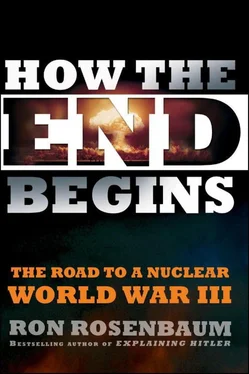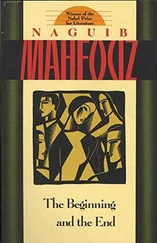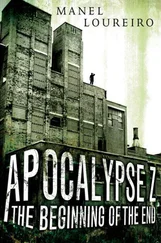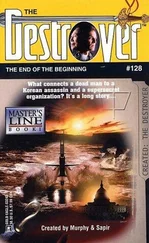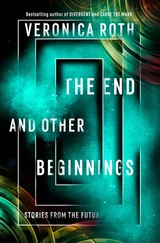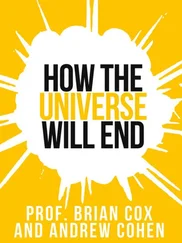The next test of the taboo was Vietnam where both Lyndon Johnson and even Richard Nixon at his maddest decided to forgo using nukes. Though Nixon liked to pose as a “madman” who threatened to do it, the very fact that the act was, by then, considered only the last resort of a madman was indicative that the ethical norm against nuclear use had attained the status of a taboo. She takes us up beyond the Cold War to the two Gulf Wars—by which time the taboo, she says, had virtually taken nukes off the table. The taboo has worked in part, she says, because by now everyone seems to think there’s a taboo, and she quotes nuclear strategist Bernard Brodie to the effect that “what is perceived to be real is real.”
But she also supports her explanation of nuclear non-use by citing an important study of the period by the nuclear historian and analyst George Quester. Quester’s was also a name I knew well—not merely for its metaphoric resonance—since it was largely Professor Quester’s testimony before a congressional committee investigating the flaws and dilemmas of nuclear command and control in the late 1970s that had first inspired me to look into the mechanics of it.
After reviewing nearly two dozen alternative hypotheses for why the U.S. leaders did not carry out preventive war before 1949 when the Soviets first tested an atomic bomb, Quester concluded that “the failure to even threaten [it] has to be explained more by moral absolutes than by the rational calculations of the American government.” It’s a daring argument—that morality and ethics counted against, perhaps even outweighed, the sheer power of multi-megaton nuclear warheads on alert. It asks us to believe that abstractions, “values,” fear of moral opprobrium, “stigmatization,” “shaming”—the punishments for breaking taboos—became real-world factors as decisive as warhead throw-weight. It’s also an attractive argument, because it suggests that military and political leaders have a conscience that evolved in the face of a possible world holocaust. It suggests human nature itself may have evolved or adapted to the radical threat to our survival. Darwin has saved us from Einstein. (I know: not literally.)
It would be nice to believe. But that taboo certainly did not filter down to the missile crewmen I interviewed, who were mainly concerned, as the spoon-and-string episode shows, with making sure they could carry out the genocidal threat of deterrence. Instead, it was almost taboo—as Major Hering found out—to talk about reasons for not committing retaliatory genocide, such as questioning the sanity of whoever gave the order.
Still, I should say, Tannenwald has been scrupulous enough to include a third explanation for non-use: luck. She means the kind of luck that had Colonel Petrov on duty in 1983 instead of someone more rule-bound. And that luck shows up regularly today, including as recently as February 2009 when two friendly nuclear subs—one British, one French—collided in the middle of the Atlantic despite both having state-of-the-art sonar, in an accident the BBC reported as a “one in a million” happenstance. And though the Daily Mail described the subs as “likely loaded with nuclear missiles,” there was little damage except to the sense of complacency about nuclear accidents not being much to worry about.
As Time reported the incident in its March 1, 2009, issue: “The seemingly impossible collision of two subs in a large ocean should remind us of the fallacy by which we assume nuclear weapons will never be used. Because the threat of global nuclear war is not zero, even a small chance of war each year, multiplied over a number of years, adds up to the likelihood that the weapons will be used. Like those two subs stalking through the Atlantic, the odds will begin to align. Mathematically, they are destined to.” [326]
There are two further problems with Tannenwald’s taboo analysis aside from downplaying luck. She doesn’t go into detail about what makes the bright line so bright between conventional and nuclear weapons. Does the taboo extend down to even the smallest battlefield nuclear-tipped artillery, less powerful than many conventional weapons? Or does it apply only to major nuclear weapons with genocidal potential? What is the threshold of the taboo? In fact, the nuclear community has been divided from the beginning on the question of whether nuclear weapons are built mainly to threaten and deter, not to use, because use would inevitably be subject to catastrophic escalation.
The nonexceptionalists like Herman Kahn saw nukes as usable parts of an arsenal, weapons that could deter through threat but could and should be designed for war fighting. This term might include limited nuclear combat with tactical shorter range battlefield nuclear weapons and bunker-buster mini-nukes to blow open buried nuclear weapons-making facilities. Or we could launch precise strikes on military targets in a deliberate escalation from conventional conflict, taboo be damned. The case for nuclear war fighting—sometimes called “counterforce” strategy—did not die with Herman Kahn. It survives in the nuclear strategy community and was put forth forcefully recently by Georgetown University’s Keir Lieber and Dartmouth’s Daryl Press in a widely noticed polemic in Foreign Affairs in its Winter 2009 issue. [327]The authors again raised the specter that nobody believed we’d carry out the indiscriminate genocidal threat of nuclear deterrence—that such horrendous overkill was either just a bluff or looked like just a bluff—so we had to provide for the use of smaller, more accurate, less genocidal nukes to maintain the credibility of any use at all. They argued that a bright line, a taboo, was a delusion and envisioned nuclear first strikes with precisely guided weapons that could take out opposing weapons and cause as few as seven hundred immediate deaths!
So is there really a bright line? Is it more than merely an exponentially higher degree of explosiveness per kiloton that distinguishes nuclear from nonnuclear weapons that has given rise to a taboo? Or is there something more malign about nuclear weapons? Tannewald doesn’t really answer why nuclear weapons are more malign by an order of moral, as well as explosive, magnitude. She briefly alludes to the development of a post–World War I taboo against the use of poison gas, and makes a comparison to the way some radiation and radiation poisoning was initially at least seen as analogous to poison gas, the psychological wedge by which the norm and then the taboo entered the culture. I think there’s something to that.
But the dimension Tannenwald tends to neglect in constructing her thesis about a taboo is culture. It’s understandable: it’s hard to measure, no brain scan yet to gauge its residual effects. And yet if one believes in the power of a taboo, that power depends on how the tabooed phenomenon is construed by the culture. She writes repeatedly about this or that leader thinking it’s “wrong,” that it goes “against our national character” to contemplate using nukes, and she gives the impression that abstract ethical thinking alone was responsible for something as powerful as this taboo. But was it all high-minded abstract ethics or was there something prior, deeper, an element of terror and grief over deaths foretold in the taboo? She neglects two things: Hiroshima and the way it’s been portrayed and virtually sacralized, and the power of popular culture, even, indeed, especially nuke porn.
If the Hiroshima bomb is merely conceived of as the most efficient way of ending a war and avoiding an invasion that could have cost a million deaths on both sides, that’s one thing. But if Hiroshima is viewed through the prism of John Hersey’s very personal and immensely moving accounts of the civilian victims of the blast, their lives before and after the blast, the years of radiation sickness that follow… that is something different. [328]
Читать дальше
